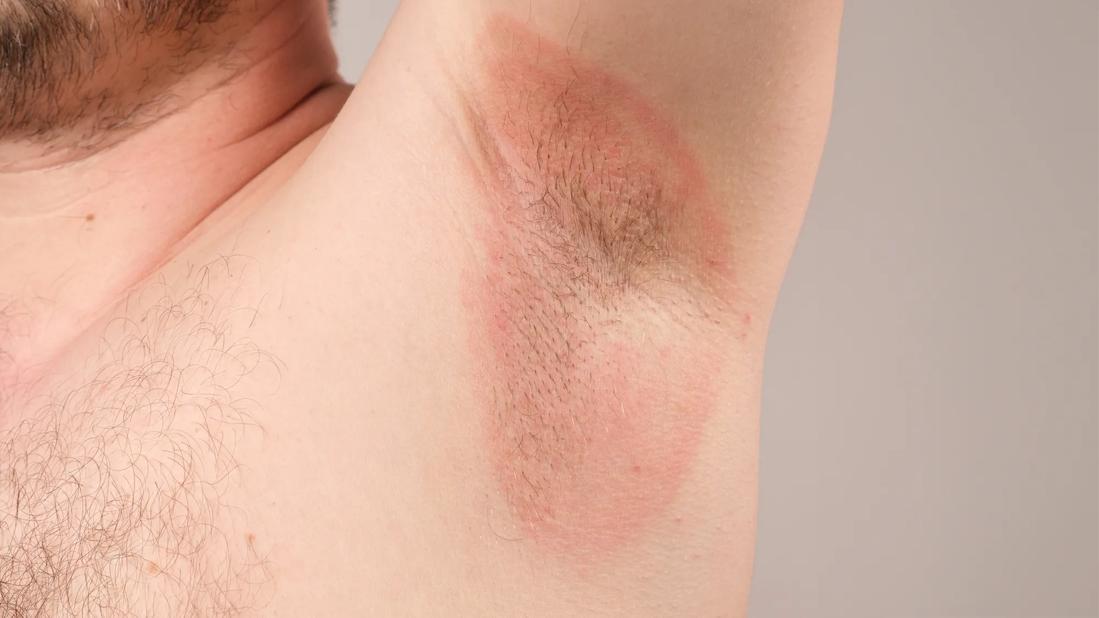Keeping your skin dry, wearing the right clothes and investing in anti-chafe products can help minimize skin irritation

If you’ve ever felt the stinging discomfort of chafed skin, it’s safe to say you want to avoid repeating the experience. How can you do that? Family medicine specialist Cory Fisher, DO, has some advice.
Advertisement
Cleveland Clinic is a non-profit academic medical center. Advertising on our site helps support our mission. We do not endorse non-Cleveland Clinic products or services. Policy
Chafing occurs when the top layer of your skin (epidermis) breaks down after rubbing against another area of skin, clothing or something else against your body. The friction irritates the skin and can leave it red, painful and itchy.
Certain areas of your body — including your inner thighs, groin, butt, armpits and breasts — are more prone to chafing. “It’s common in areas where you have natural creases and skinfolds,” says Dr. Fisher.
Body moisture and wet clothes can fuel chafing, which explains why it’s often a byproduct of sweaty summer months.
But know this: Chafing can happen anywhere on your body at any time if conditions are right.
A little pre-planning may be all it takes to avoid chafing. Here are some steps you can take to reduce your chance of feeling the pain.
Moisture is the enemy when it comes to chafing. With that in mind, Dr. Fisher suggests:
Advertisement
Friction is the root cause of chafing. Applying a lubricant to your skin, especially in areas prone to chafing, allows things to smoothly slide and glide across your body rather than rubbing you raw.
A well-placed dab of petroleum jelly (such as Vaseline®) can guard against chafing, says Dr. Fisher. Ditto for lubricating gels, creams, balms and powders.
Lubricants are especially effective if you’re exercising and doing a sweaty activity with repetitive motions. Examples include running — where jogger’s nipple is a very real concern — and cycling.
The phrase “dress for success” applies if you want to avoid chafing. Here are a few ways your wardrobe choices can make a difference.
Chafing happens. That’s just reality. Even if you take precautions, your skin may be worse for wear by the end of a random day. (Chances are you’ll find out when water hits the spot in the shower, too. YOUCH!)
Whether it’s armpit chafing, thigh chafing, groin chafing or chafing in any area, Dr. Fisher offers these suggestions to find relief:
With proper care, chafed skin should heal in a few days to a week.
In rare instances, chafing can lead to more serious issues. “Bacteria and fungi can enter through any break in your skin, putting you at risk for infections like cellulitis,” explains Dr. Fisher.
See a healthcare provider if chafed skin:
Following Dr. Fisher’s tips to avoid chafing can help minimize your risk of dealing with the skin issue. “With moisture-wicking clothes and anti-chafe products, it’s easier to keep chafing from happening in the first place,” he says.
Advertisement
Learn more about our editorial process.
Advertisement

Working with a therapist, staying active and practicing mindfulness are just a few ways to help manage stress

Using precautions like bandages and lubricants can help you run away from this uncomfortable condition

Laser hair removal, laser surgery, excision and steroid injections are all potential treatment options

Use products that reduce inflammation without causing irritation and avoid fragrances, dyes and exfoliators

Nutrition plays an important role in managing this chronic inflammatory skin disease

Aloe vera, warm compresses and diet adjustments can help alleviate symptoms

Popping or prodding at these cysts could lead to infection

Causes can include dry skin, eczema, psoriasis, sunburn and fungal infections

The best parenting style balances enforcing rules and showing plenty of love

Tips include cutting back on sugar, focusing on exercise and managing stress

It can be harder to let go when you’ve invested time, energy and emotions — but it might be the healthier choice long term